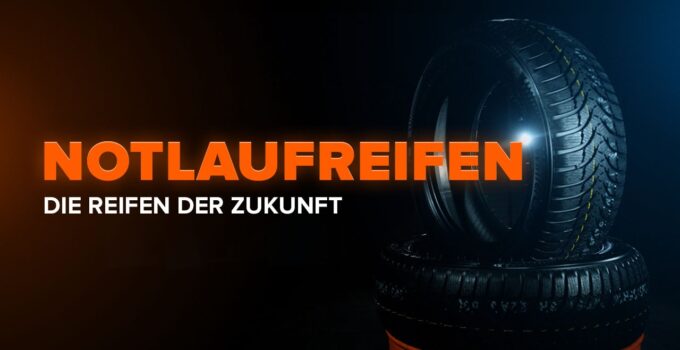
What are runflat tires?
Runflat tires are tires that allow you to continue driving after a puncture and allow control of the vehicle at speeds of up to 80 km/h and distances of up to 50-90 km.
Types
- Tires with reinforced sidewalls
Rigid and durable sidewalls support the weight of the vehicle and prevent the tire cord from coming into contact with the rim.
They are made from a special heat-resistant compound manufactured.
The distance that a punctured tire can travel is between 50 and 90 km.
The maximum speed is between 50 and 80 km/h. - Tyres with support ring
A special ring ensures rigid support along the entire circumference of the tire.
These tires can withstand heavy loads.
With them can be driven without speed limit even after damage.
The maximum distance that damaged tires can cover is 320 km. - Self-sealing tires
There is an additional sealing layer of viscous polymeric material under the tire tread.
In the event of damage, it flows out and hardens, sealing small punctures and maintaining tire pressure.
Advantages
- You do not lose control of the vehicle in the event of a flat tire.
- You don't have to change the tire immediately or yourself.
- You don't have to carry a spare tire in your car.
- Run-flat tires are more resistant to mechanical damage.
- You can save on roadside assistance.
Cons
- High price
- Increased tire weight
- A rougher ride
- Use faster ab
- Not all workshops offer services for this
- They cannot be repaired
Markings
| Abbreviation | Meaning | Manufacturer |
| DSST | Dunlop Self Support System | Dunlop |
| RFT | RunFlat Tyres, RunFlat Technology | Pirelli, BridgeStone, Firestone, Nokian |
| RF | RunFlat | Yokohama, Nokian |
| ZPS | Zero Pressure System | Yokohama |
| SSR | Self Supporting RunFlat | Continental |
| CSR | Conti Support Ring | Continental |
| ZP | Zero Pressure | Michelin |
| ROF | RunOnFlat | Goodyear |
| EMT | Extended Mobility Tire | Goodyear |
| SSS | Self-Supporting Structure | BF Goodrich |
| XRP | eXtended Runflat Performance | Kumho |
| TRF | Toyo Run Flat | Toyo |
